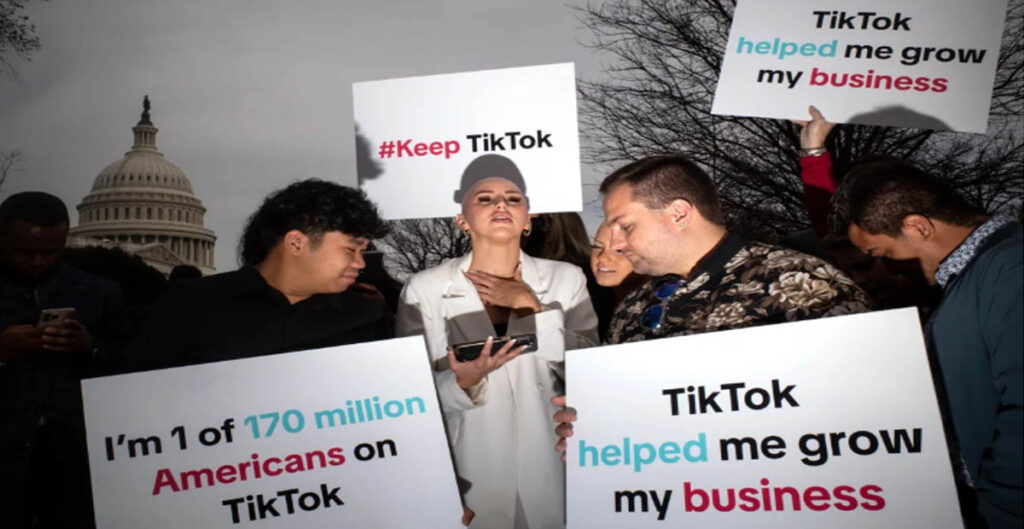
In a nation where nearly half of teens express waning trust in government institutions, the Supreme Court is poised to rule on cases that directly impact young lives. From the controversial TikTok ban to laws on transgender healthcare and vaping regulations, these decisions highlight a growing disconnect between legal debates and the concerns of America’s youth.
TikTok Ban: National Security vs. Teen Culture
Kailey Corum, a high school junior from Virginia, epitomizes the struggle of millions of teens grappling with the potential TikTok ban. Like many, she uses the platform for news, entertainment, and creative inspiration. While understanding the app’s perceived national security risks, Corum remains skeptical about the Supreme Court’s capacity to decide its future fairly.
The TikTok ban, set to take effect in January, stems from fears that its Chinese ownership could compromise U.S. security. Yet, for teens like Corum, the debate revolves more around preserving a key cultural touchstone than geopolitics. Leslie Y. Garfield Tenzer, a social media law expert, notes the disconnect: “The ban isn’t about teenagers’ use of TikTok; it’s about fears of foreign manipulation.”
Transgender Healthcare and Vaping: The Court’s Broader Impact on Teens
Beyond TikTok, the Court is addressing issues that deeply affect teenagers’ well-being and autonomy. One major case examines a Tennessee law banning gender-affirming care for minors. Supporters argue the law protects young people from irreversible medical decisions, while opponents view it as a harmful intrusion on healthcare choices.
Justice Clarence Thomas highlighted the age-based nature of the law, framing it as a neutral policy rather than one targeting gender identity. However, transgender teens and their advocates worry about the personal toll. The Court’s approach focuses more on state authority than the lived experiences of those affected, leaving many feeling unheard.
Similarly, a case about FDA efforts to restrict vaping products has less to do with the documented risks of youth addiction and more with regulatory procedures. Despite the FDA’s findings that nearly 20% of high school students vaped in 2020, the legal battle centers on whether the agency followed proper protocols.
Aaron Tang, a law professor specializing in education, observes: “These cases highlight a troubling trend: the Court’s focus is on procedural questions, not the real-world implications for young people.”
Culture Wars and the Politicization of Youth Issues
Many of these legal battles are intertwined with broader cultural disputes. Issues like book bans, the inclusion of transgender athletes, and the teaching of American history have become flashpoints in state legislatures, fueling litigation that often sidelines youth voices.
Diana Thu-Thao Rhodes of Advocates for Youth points to a growing disillusionment among teens: “What we hear from young people is a sense of distrust. They feel the government is more interested in scoring political points than genuinely addressing their needs.”
A Gallup survey underscores this sentiment, revealing that only 20% of Gen Z voters trust the Supreme Court significantly.
The Need to Amplify Youth Perspectives
Despite their centrality to these cases, teens often feel like bystanders. While the Court considers laws affecting them, young people’s perspectives remain largely absent from the legal process.
Spencer Rahim, another high school junior from Virginia, believes teens find ways to adapt, even in the face of restrictive policies. “Most of us don’t post personal stuff on TikTok anyway,” he says, though he adds that the justices should “listen to the people a little more.”
This sentiment reflects a broader call for inclusivity in policy making. Experts warn that ignoring young voices risks alienating a generation already skeptical of government institutions.
Conclusion: A Critical Juncture for Youth Rights
As the Supreme Court tackles these consequential cases, its decisions could reshape the social and legal landscape for millions of teens. Yet the challenge remains: balancing legal principles with the lived realities of those most affected.
For America’s youth, the outcomes of these cases may shape more than policies—they could define their trust in a system they feel increasingly detached from.
For visit specific news visit again https://khudaniajournal.com

